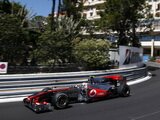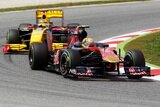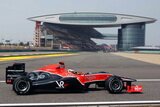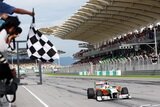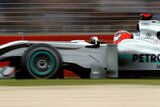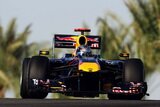Chassis:
The Fuji circuit is dominated by slow-speed corners, so mechanical grip will be a critical factor. This is likely to push the teams towards a relatively soft overall set-up, much like in Bahrain for example, although achieving a good change of direction will be important in the tight, slow-speed sections, which may push teams towards a stiffer front end. Traction will be a critical parameter, as cars performing poorly on the exit of Turn 16 will be vulnerable to overtaking manoeuvres on the main straight, or into Turn 1. Due to the smooth nature of the new tarmac, the cars can run with a reasonably low ride height as there is little concern of the car bottoming-out.
Aerodynamics:
In terms of downforce level, the circuit has been designed on the modern principle, which requires teams to sacrifice lap-time (and downforce) in order to achieve competitive top speeds on the straight to make up or defend position. As such, the cars will be running lower-than-optimum wing settings for the twistier sections, further emphasising the importance of good mechanical performance. The circuit includes only two medium to high-speed corners, at Turn 3 and the long 180-degree right-hander of Turns 4 and 5. The latter in particular is likely to see the cars suffering from a high amount of understeer, which the drivers and engineers will work to dial out through the weekend without compromising the slow-speed performance.
Brakes and tyres:
The brakes will have a relatively easy time, with just two major braking events, into Turns 1 and 10 - and plenty of time to cool in between. In terms of tyre energies, the circuit is not particularly severe owing to the absence of high-speed corners; however, rear tyre wear is an important parameter due to the heavy traction demands, and the penalty that excessive wear will bring in terms of making a driver vulnerable to overtaking. Bridgestone will therefore supply the soft and medium compounds from its 2008 range for this race, as was the case last year.
Engine:
Fuji does not provide a particularly tough test for the V8 engines with just 53 percent of the lap spent at full throttle, but the problems it poses are poles apart. The long main straight will see the engines at full throttle for over 17 seconds, providing a severe test for some of the major moving parts. For most of the rest of the lap, though, good low-end performance will be critical and a torquey engine will be an important asset in launching the cars out of the low-speed corners towards the end of the lap. Smooth mapping will also be important for maintaining car stability, as the cars will often be downshifting while turning and braking in the final part of the lap.
formula1.com
Comments:


